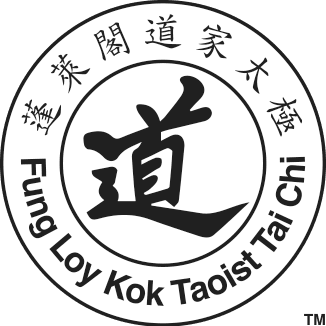The Dragon's Head Blog: Notes on Anatomy and Physiology: Teaching Our Art in a Nursing Home
Not quite seven years ago, a well-known Australian geriatrician and member of the Taoist Tai Chi Society, Dr. Dick Lefroy, sent me a tape of people practicing the Taoist Tai Chi® arts. All were residents of a long-term care facility. Each was dealing with dementia or with another disabling medical condition such as motor neuron disease or cerebellar stroke. Viewing the tape was so moving that the experience remains with me still. The real power and beauty of our art seems most apparent when practiced by those with significant health problems.
In an accompanying letter, Dr. Lefroy raised three questions.
What follows is an outline of the questions he posed and a slightly edited version of my response at the time:
1. Can the performance of those with dementia, limited to an eccentric rendering of the foundation exercises, be regarded as Taoist Tai Chi® arts?
To me, there’s no doubt that they are practicing the Taoist Tai Chi® arts. Not perhaps in a way that is elegant to the eye but certainly in a fashion that introduces their bodies and minds to an exercise form that has a very long history. A form practiced in disparate parts of the world by students who find themselves in hugely different circumstances. A form capable of improving the health of all who make regular use of it.
Of course, the interpretation of the form will be significantly altered by each person’s health and situation. It is our instructors who help us gain the most benefit, stretching out the soft tissues, increasing strength and balance, taking pleasure in what our bodies are still capable of doing or relearning, and enjoying the company of others engaged in the same pursuit.
My first real experience of teaching students with dementia came when we set up a class in a nursing home close to where I live. Quickly, I realized that instructing in that setting was not at all like teaching during a health recovery week or class. Classes in a nursing home have their own priorities. Rather than looking for a profound change in the person’s physiology, one’s focus becomes providing, on a regular basis, an hour or so of friendship, pleasure, interest and satisfaction, knowing full well that the details of today’s teaching could be taught tomorrow as if it was fresh information.
And yet the situation in a nursing home is often more complicated than that. There are also residents with wrecked bodies but clear minds who are able to retain what they have learned and make definite progress over time if we guide them well.
2. Do those with dementia achieve physical and/or mental benefit from their practice?
Yes, they do. But we see the changes as modest when judged by the benefits experienced by those who practice without mental impairment.
I am reminded, as I write, of the extreme delight routinely provided by the sitting kicks to a man with cerebral palsy who has spent all his life in a wheelchair. He gets so much joy each time the kicks are done that he almost falls out of his chair. His delight is shared by all in the room. And although his form is very unusual, he is not hurting himself.
There is another woman, heavily sedated, who always falls asleep part way through the class. But she always beams when she sees me arrive.
Are these modest benefits worth the intervention? I believe they are and for the same reasons we care for anyone who has a progressive illness or is dying. For some with large cognitive deficits, the class may be primarily a way for us to enter into their lives, a structure that gives initial shape to a connection with people who have become invisible to society and often even to friends and family. The foundation exercises may be about all that they can manage but they are moving and temporarily engaged, and someone from the outside world is showing an interest in what their long lives have meant.
3. Who is able to teach this art – therapy staff (when available), visitors from the Society (when available) or other caregivers on staff?
For me, only students of the Taoist Tai Chi® arts should instruct these arts. This applies as much to the nursing home situation as anywhere else. It takes a discerning eye and lots of experience to know what the art entails and what other things the Society has to offer. To judge what exercises would be most beneficial for a particular student and to respond to problems like a severely arthritic shoulder or a paralyzed side. To determine when it is safe to have the student stand or to remove the arm supports of a wheelchair to make more room for the body to practice.
You need to experience personally the benefits of this discipline to believe in its potential value for others and to have the patience to teach in often trying circumstances. The deeper our understanding, the more able we are to guide the practice of our students. And instructors need the support of others in the Society to remember that they are not just teaching an exercise and to gradually appreciate what it means to care for those who are ill or dying.
We do need to train more instructors to meet the increasing demand for classes in nursing homes. Each class presently being offered is an opportunity for a more seasoned teacher to train those more junior. Little by little, we will build the resources to offer instruction wherever interest is expressed.

